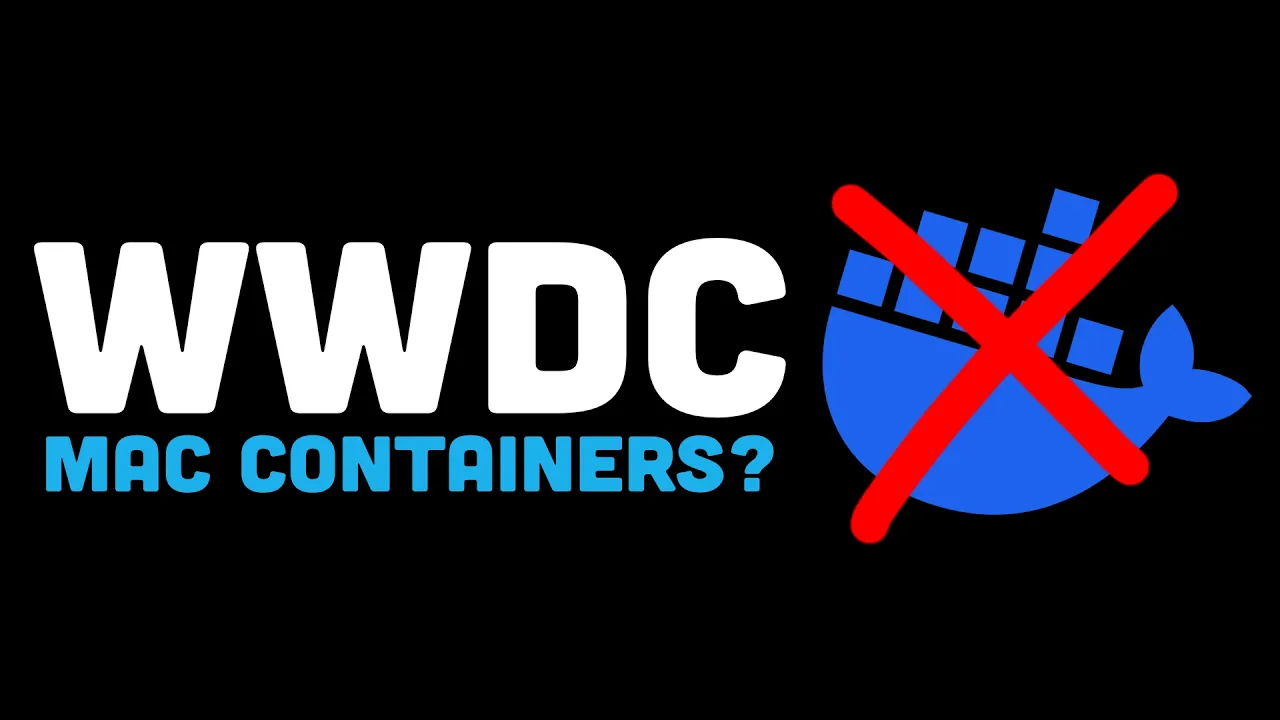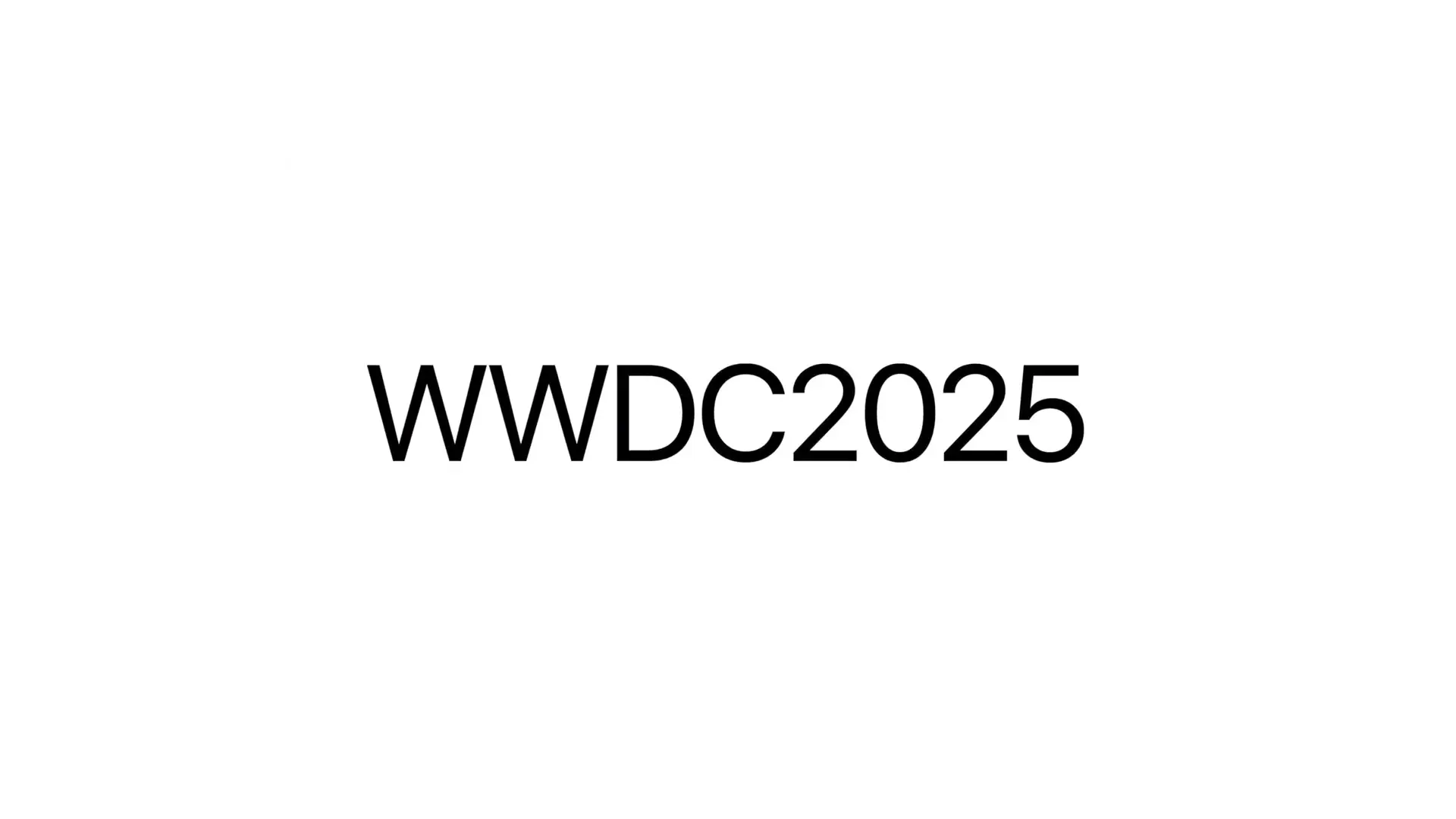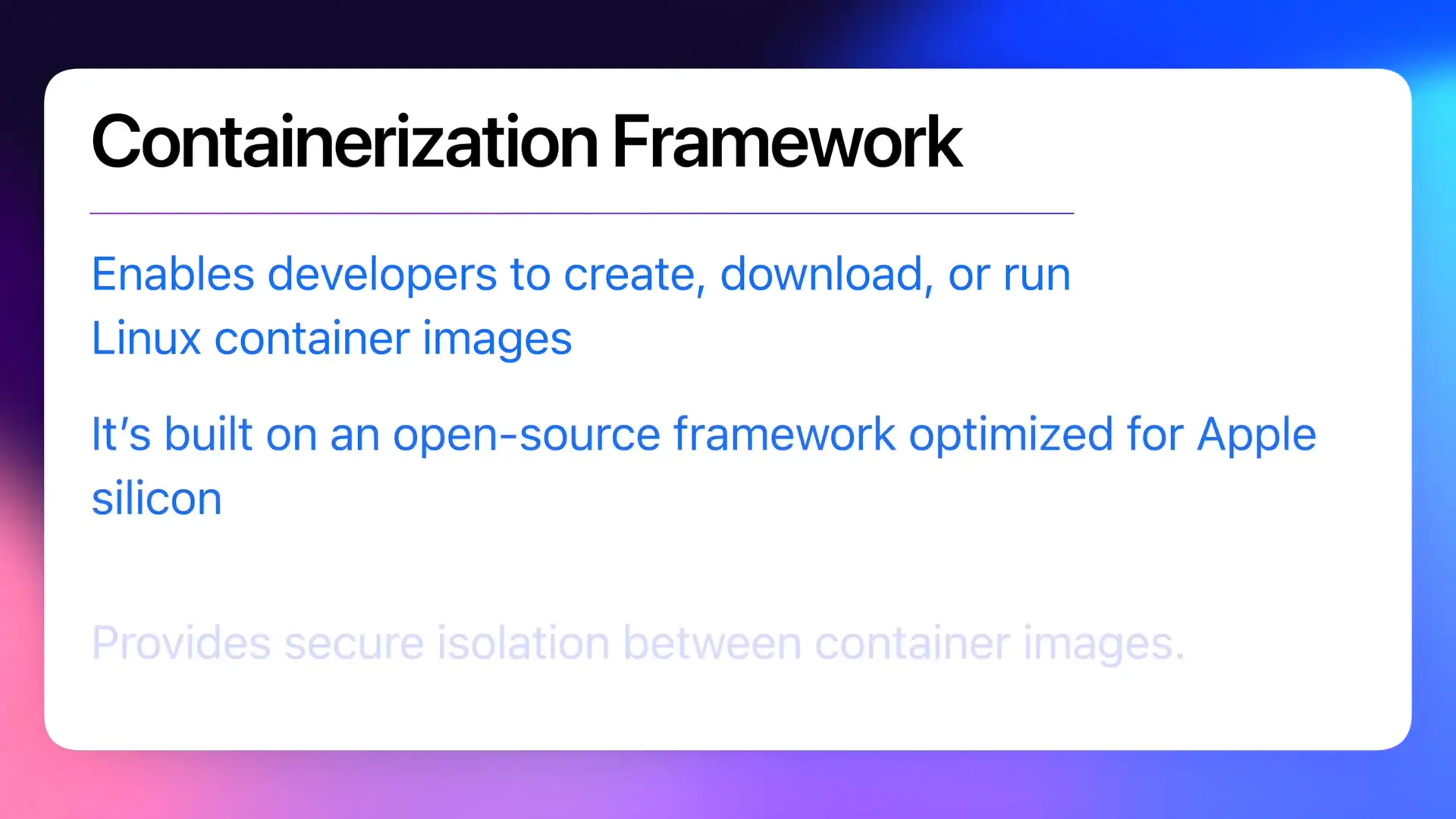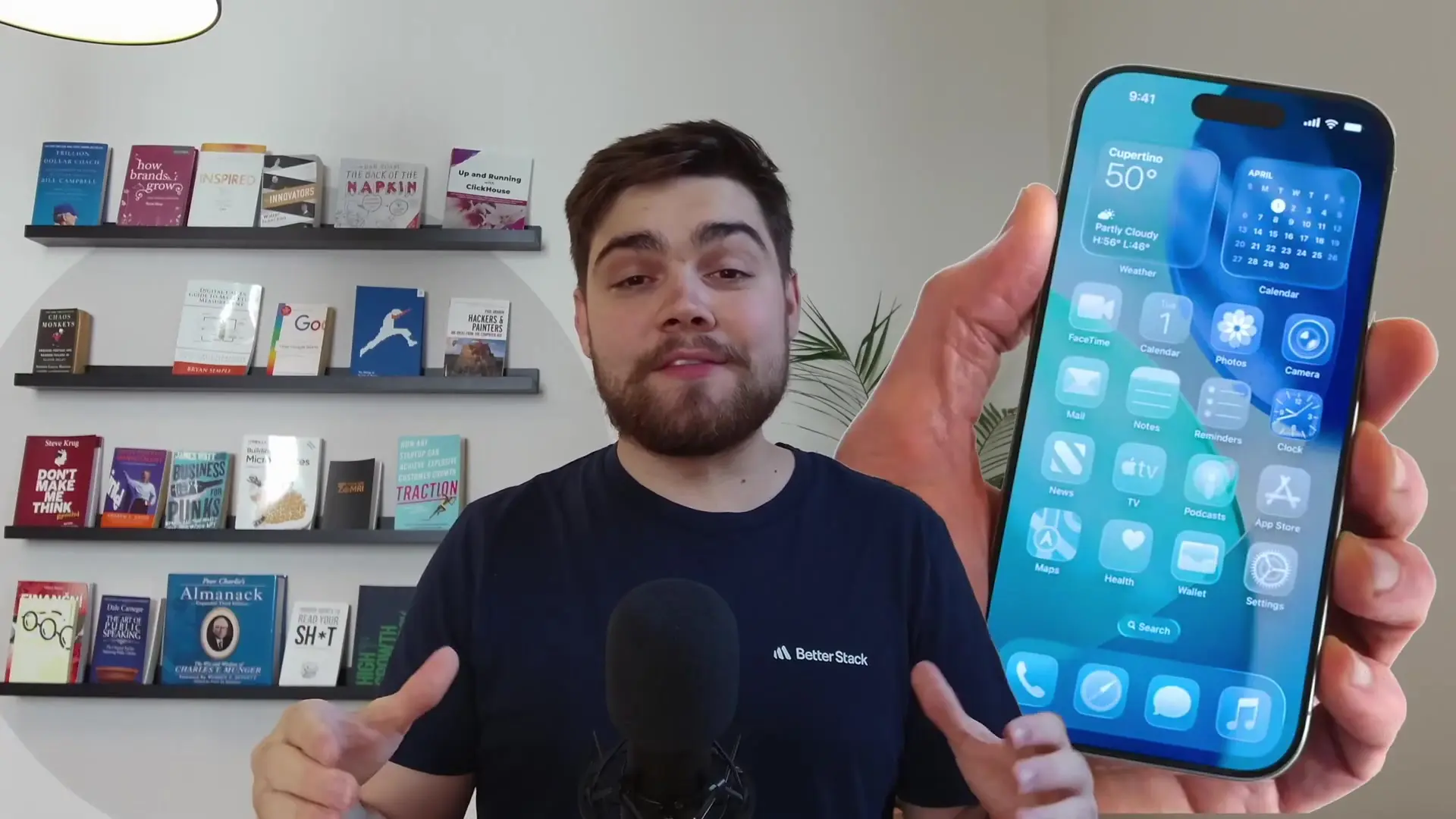
Apple has quietly introduced a revolutionary containerization framework for MacOS that could potentially reshape how developers work with containers on Apple hardware. This framework, which received surprisingly little attention during WWDC 2025, enables developers to create, download, and run Linux container images directly on Mac with performance optimizations specifically for Apple Silicon.

Key Features of MacOS Native Containerization
The new MacOS containerization framework represents a significant shift in how containers operate on Apple hardware. Unlike traditional approaches that run all containers within a single Linux VM, Apple's implementation creates a lightweight VM for each individual container. This architectural difference delivers several important benefits:
- Enhanced security through better isolation between container images
- Improved performance with Apple Silicon optimization
- Compatibility with standard OCI (Open Container Initiative) images
- Seamless integration with existing container workflows
The framework is built on open-source technology and has already been published on GitHub for developers to explore. There are two main components: the core containerization architecture and the container project, which functions similarly to Docker but leverages the native containerization capabilities.

Technical Implementation and Architecture
The technical architecture of MacOS containerization takes a fundamentally different approach compared to traditional container solutions. Instead of running all containers within a shared Linux VM environment, Apple's solution creates isolated, lightweight VMs for each container instance.
This approach offers significant advantages in terms of resource allocation, security boundaries, and overall system performance. The containerization framework handles the complexity of managing these lightweight VMs while presenting developers with a familiar container interface.
Importantly, the framework maintains compatibility with industry standards by consuming and producing standard OCI images. This ensures that images built with Apple's containerization tools will run seamlessly in other container environments, and vice versa.
Comparison to Existing Solutions
The new MacOS containerization framework appears to be more aligned with newer container management solutions like Orbstack and KMA rather than traditional Docker for Mac. This represents Apple's recognition that containerization is a critical development workflow that deserves native, optimized support.
For Mac users who have experienced performance issues with Docker Desktop or other virtualization-based container solutions, Apple's native implementation could offer a compelling alternative. The per-container VM approach should provide better isolation and potentially more efficient resource utilization compared to the shared VM model.
Getting Started with MacOS Containers
While detailed documentation is still emerging, developers interested in exploring the MacOS containerization framework can find the projects on GitHub. The core architecture is available in the containerization repository, while the Docker-like implementation can be found in the container project.
# Example of using the MacOS container CLI (conceptual)
$ container pull nginx:latest
$ container run -d -p 8080:80 nginx:latest
$ container lsThe command structure appears to be intentionally similar to existing container tools, making the transition easier for developers already familiar with Docker or other container runtimes.
Apple's On-Device Foundational Model Framework
While the containerization framework was the hidden gem of WWDC 2025, Apple also announced significant updates to their on-device AI capabilities through a new foundational model framework. This framework enables developers to leverage Apple's on-device, offline AI models in their applications.

The framework offers native Swift support with straightforward implementation. Developers can generate text, create tools (like weather information retrieval), and even produce structured outputs that map directly to Swift data structures - a capability Apple calls "guided generation."
// Example of using Apple's foundational model framework
let model = LanguageModel()
let response = try await model.generateText("Summarize the benefits of containerization")Model Performance and Capabilities
Apple's on-device model is approximately 3 billion parameters in size, complemented by a more powerful server-based model when additional processing capability is needed. Benchmarks indicate that the on-device model outperforms comparable small models like Qwen 2.5B, though it falls short of larger models like Qwen 34B and Gemma 34B.
Interestingly, the model shows varying performance across languages. It performs exceptionally well with English variants (British, Canadian), but lags behind competitors in languages like Portuguese, French, Italian, German, Spanish, Chinese, Japanese, and Korean.
For image-related tasks, human evaluations suggest the model performs comparably to Gemma, making it suitable for applications requiring image understanding capabilities.
Implications for Developers
These two framework announcements represent significant additions to Apple's developer ecosystem. The containerization framework addresses a long-standing pain point for MacOS developers working with containers, while the foundational model framework opens new possibilities for privacy-preserving AI features in applications.
For teams building applications that need both containerized services and AI capabilities, the combination of these frameworks could enable powerful new workflows entirely within the Apple ecosystem. The privacy-focused, on-device approach to AI aligns with Apple's broader commitment to user privacy while still enabling advanced capabilities.
Conclusion
Apple's new MacOS containerization framework represents a significant step forward for developers working with containers on Apple hardware. By taking a fundamentally different approach with per-container VMs, Apple has created a solution that promises better security, performance, and integration with the MacOS ecosystem.
While Docker and other container solutions will likely remain important cross-platform tools, Apple's native implementation could become the preferred option for many Mac-focused developers. Combined with the new foundational model framework, these announcements demonstrate Apple's commitment to providing developers with powerful, privacy-focused tools for building the next generation of applications.
Let's Watch!
MacOS Native Containers: Apple's New Framework That Could Challenge Docker
Ready to enhance your neural network?
Access our quantum knowledge cores and upgrade your programming abilities.
Initialize Training Sequence